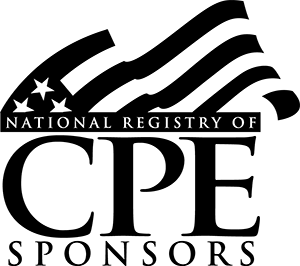Course Library
The Management Conference (Two-Day) (ZM)
Jan 10, 2022 Fred Pryor Seminars and CareerTrack, divisions of Pryor Learning Solutions, Inc.Discover the management techniques that get results. The best managers and supervisors aren't born that way. They develop the skills needed to successfully juggle the many tasks each day brings. They learn to give clear direction, make their ideas known, and resolve conflicts. These highly effective managers and supervisors know how to do their jobs by adopting proven techniques and applying them to their unique situations.
Previously offered as a one-day, two-track event, this seminar is now offered in a two-day format so you get the benefit of accessing all the content offered.
Day One: Becoming a More Effective Manager and Leader
SESSION I: From First-Time Manager to Seasoned Professional Now that you’re a manager or supervisor, your relationship with your former peers has changed and many of them may be your employees. It’s up to you to make the transition as smooth as possible. This session will give you an overview of basic management skills and help you identify and overcome common problems. You’ll leave with the knowledge you need to maximize your performance and the performance of the people you manage. This session will cover critical topics, such as: ■ Ways to dodge the problems that often derail new managers ■ How to start off on the right foot ■ Hints for reading your boss so you give and get the most support ■ What to expect from your new position ■ How to assess your people and your team to get the most out of everyone
SESSION II: Managing Multiple Projects and Priorities How do you decide which task to tackle first when they’re all stamped “urgent?” How do you decide what’s really urgent and what’s just important? How do you keep tabs on several projects at once without losing your cool? In this session, you’ll learn ways to set priorities and manage tasks more efficiently, including: ■ A tracking system to monitor your own projects — and the projects of those you manage ■ Ways to identify shortcuts and save time ■ How to eliminate redundancy ■ Techniques for cutting the clutter on your desk, in your files and on your computer ■ Jobs to tackle when your energy is high ■ How to handle demands from others
SESSION III: Powerful Communication Skills Communication is more than what you say — it’s how you say it. If your words say one thing, but your body language says another, your message loses clarity and creates confusion. Clear communication is among the most important tools of effective management. This session will give you the keys to successful communication, so you can get your position and ideas across. ■ How communicating as a manager or supervisor differs from communicating as an employee ■ The vital role of planning ■ Secrets for defusing a tense situation when an employee disagrees with you ■ Keys to using and reading body language to enhance understanding ■ How to convey a warm and caring attitude
SESSION IV: Making the Transition from Manager to Leader There’s a world of difference between managing and leading. A manager can get people to do their work, but a leader helps people work with enthusiasm and commitment. Your ability to stretch yourself and learn can mean the difference between being a good manager and an outstanding leader. This session will show you how to draw on every inner resource you have and become the kind of leader who inspires employees to perform at peak capacity. ■ How to move from the tried-and-true to innovative solutions ■ Why you must communicate your vision to your employees ■ What kind of leader you are and what kind you could be ■ How to adapt your leadership style to specific situations
Day Two: Overcoming Management and Supervisory Challenges
SESSION I: Overcoming Negativity and Attitude Problems in the Workplace Negativity and bad attitudes are more than unpleasant. People who won’t take responsibility, expect special treatment, act angry or moody, work carelessly and won’t show respect are a work-hazard. They can damage productivity, drive away good employees and constitute one of the most difficult challenges a manager or supervisor will ever face. This session will show you how to identify the causes of negativity and attitude problems, help you develop a strategy for addressing them and reveal ways to create a work environment that encourages cooperation and harmony. ■ How to quickly identify negativity in your employees ■ What to do when negativity becomes contagious ■ Effective ways to address the most common negative behaviors ■ Why negativity and bad attitudes develop ■ How to help your employees survive in a negative environment and protect yourself from other people’s bad attitudes
SESSION II: Using Criticism and Discipline to Turn Around Problem Employees The ability to criticize or discipline employees without breaking their spirit is among the most important skills a manager or supervisor must develop. This kind of situation demands diplomacy and tact, along with careful consideration of where, when and how the communication happens. In this session, you’ll learn how to avoid making the person you’re criticizing defensive so your message gets through, what should happen if the problem doesn’t go away after it’s pointed out and how you can turn a negative situation into a positive experience for the employee and for you. ■ Techniques for avoiding accusations, hostility and defensiveness ■ How to document the encounter to prevent any misunderstanding ■ Why you should develop a plan for improvement and get the employee to support it ■ What to do if every effort fails and employee performance doesn’t turn around
SESSION III: How to Handle Anger and Emotion in the Workplace People don’t turn off their emotions when they enter the workplace. If they’re angry or upset at home, those feelings are likely to carry over to their jobs. When emotions flare, the effects can be devastating to morale. In today’s environment, an emotional outburst can even spark fears of violence. Handling anger and strong emotion is an important managerial and supervisory skill. It can mean the difference between high and low productivity, keeping and losing good employees and maintaining or destroying the overall effectiveness of the workplace. In this session, you’ll learn how to manage emotions — yours and others’. You’ll leave with tools to help you react appropriately when the anger is directed at you and you’ll be able to defuse potentially explosive situations. ■ Ways to avoid unintentionally worsening a conflict ■ What to do when someone — including your boss — starts yelling ■ How to communicate with an emotional person ■ When to back down and when to hold your ground ■ How and when to let someone “save face” after an emotional outburst
SESSION IV: Managing Through Change Change is constant — that is a given. How to be an effective manager or supervisor in the midst of change is not. However, it’s important to learn how to manage through it because change is frightening to many people. They might see it as a threat to their jobs, and living under a threat — real or imagined — is devastating to morale and motivation. This session will show you what steps to take when change threatens jobs and how to communicate change and position it positively. ■ How to build a positive case for change ■ Tips to assess and address your employees’ responses to change ■ How to develop a positive vision of change for your team ■ Why it’s important to keep communication open during organizational change ■ How to plan for change ■ Guidelines for implementing change and evaluating progress ■ What you can do to turn a changed environment into a new workplace culture

